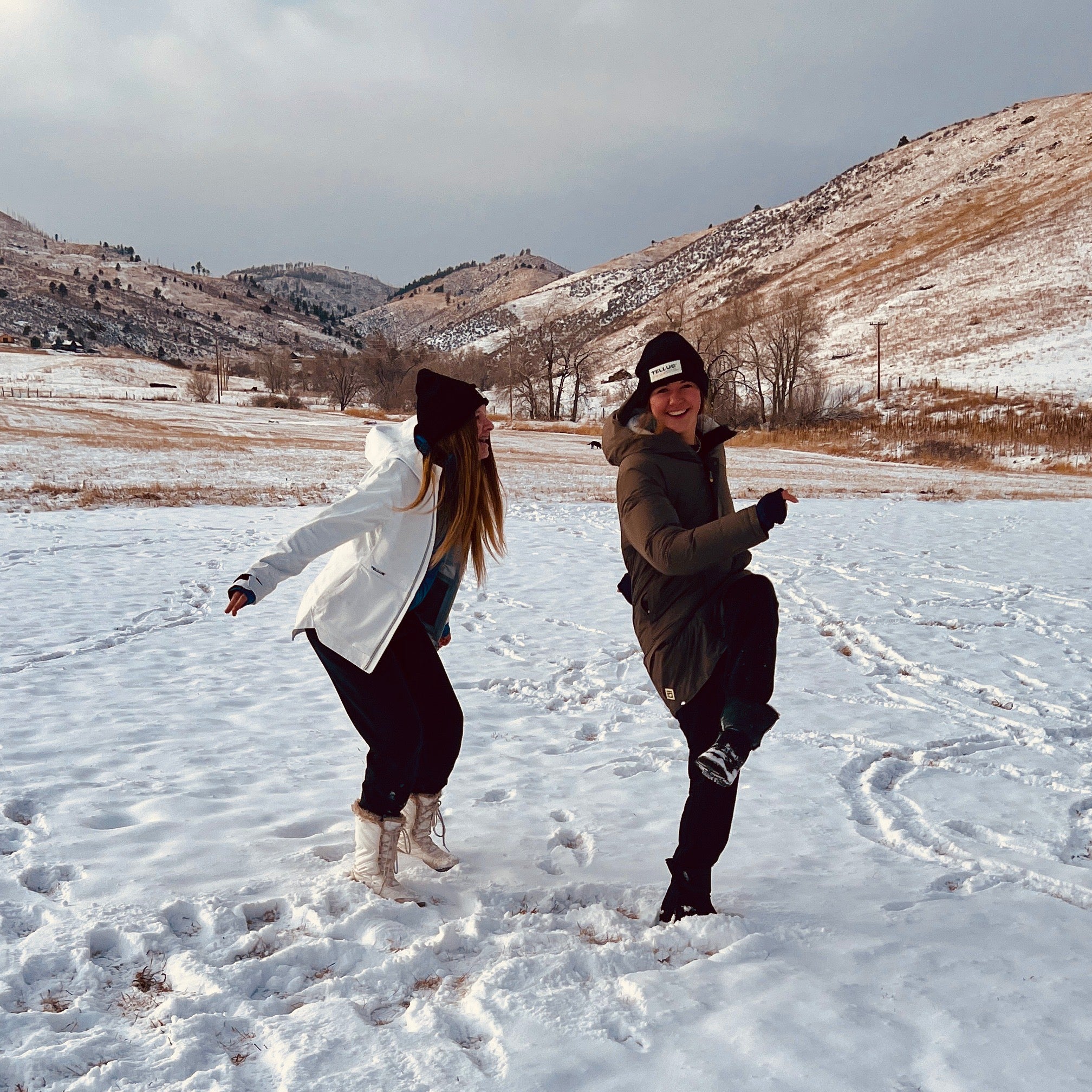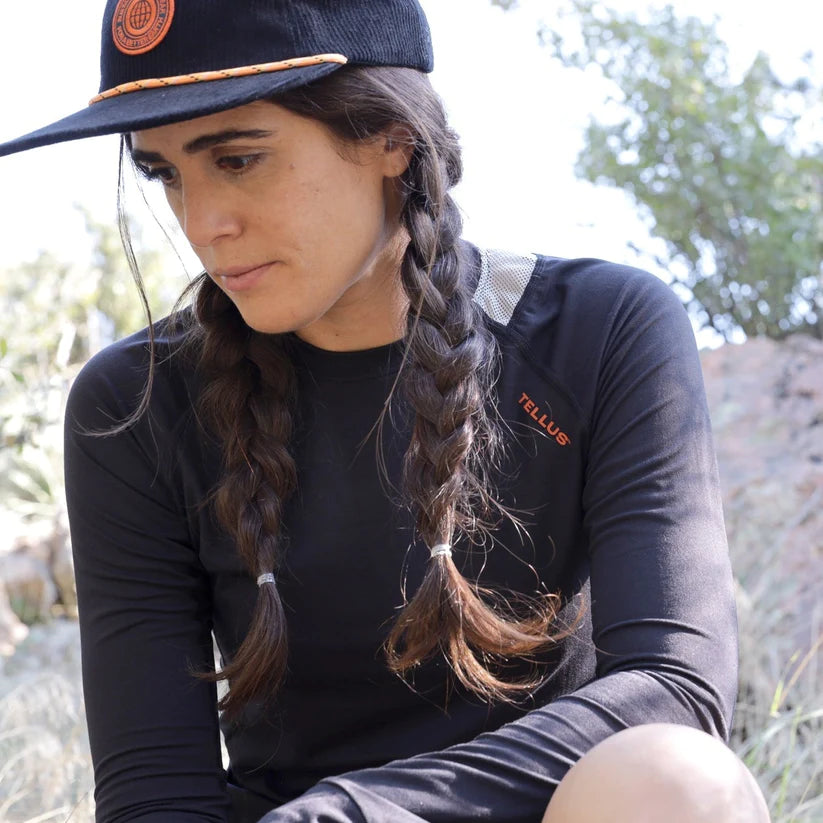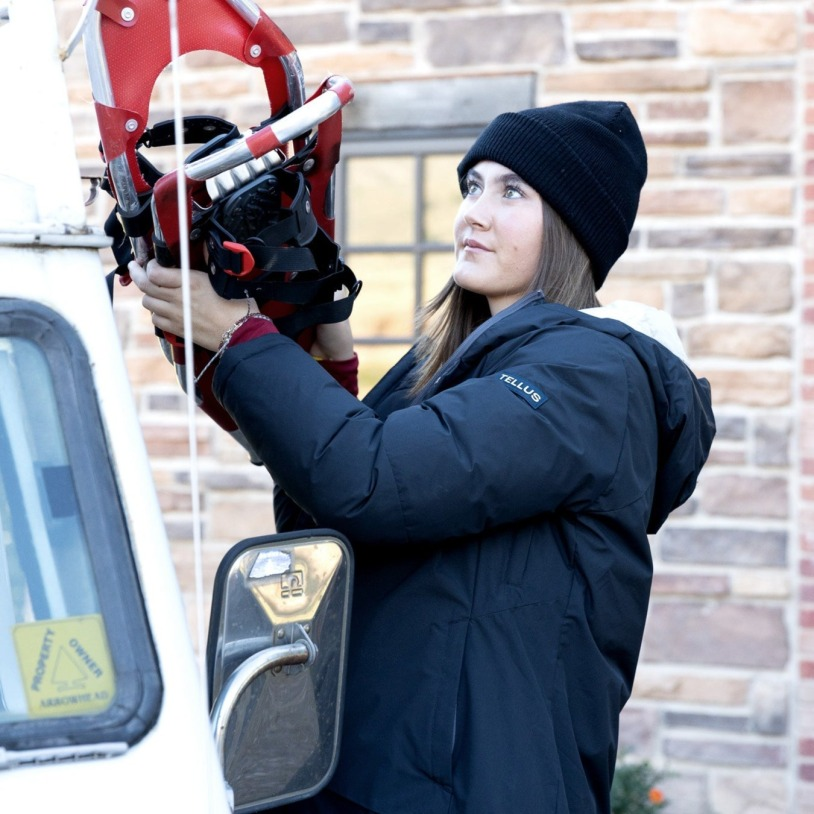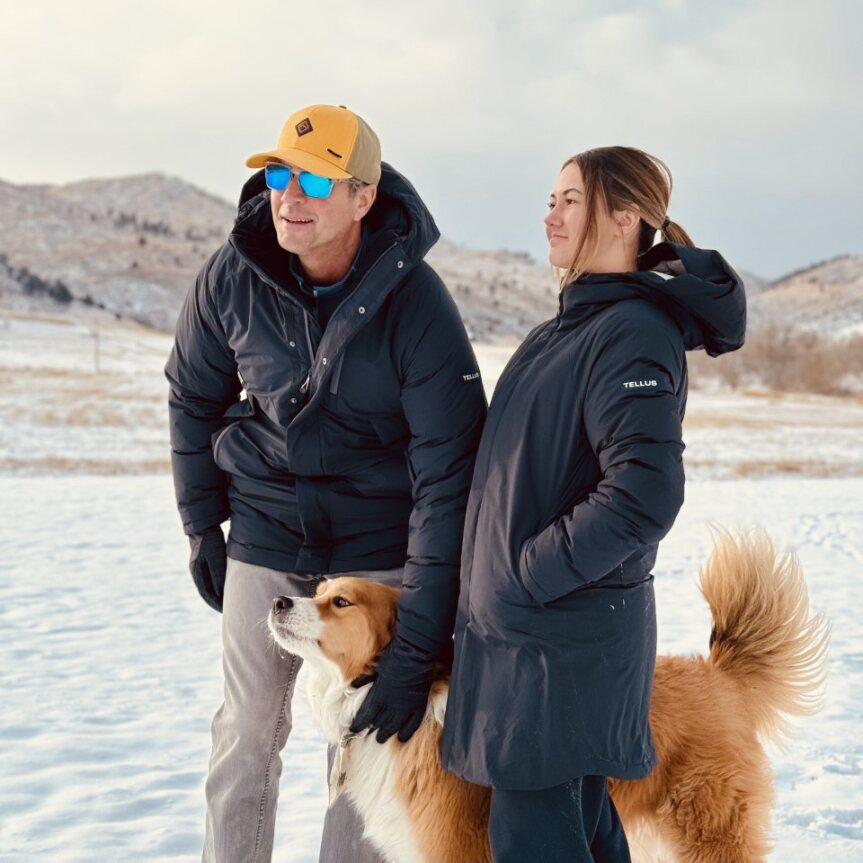How to Layer for Winter Hiking

Tellus outerwear is inspired by living and adventuring in Colorado. One day it’s minus zero temps. Two days later it’s 60 degrees. To survive and thrive in these fast and extreme temperature changes, we’ve become pros at the art of layering for outdoor activities.
During the winter months, Colorado is known for its glorious skiing conditions. While the skiers get the limelight, winter hikers enjoy Colorado’s outdoor paradise just as much. And just like skiing, the proper gear and layering for winter hiking are key to successful adventures.
The basic theory of a layering system consists of three components:
- Base layers wick moisture away from your skin
- Mid layers insulate and keep you warm
- Outer layers shield against the weather
Tellus activewear is precisely designed with this layering system in mind.

• What is a base layer?
The base layer is what’s right against your skin. And its main job is to wick away moisture to keep your skin dry. Cotton is your enemy when it comes to outdoor activewear. It gets wet and stays wet making it hard for your body to regulate its temperature. Tellus base layers are made with synthetic materials (84% recycled polyester and 16% Spandex) for high performance. They are also moisture-wicking, quick-drying and antimicrobial.
Tellus base layers for winter hiking
- Poudre Trail Performance Long Sleeve Shirt for men
- Poudre Trail Performance Long Sleeve Shirt for women
• What is a mid layer?
When layering clothes for winter hiking, you want your mid layer to insulate and keep you warm. The mid layer works to retain your body heat while you reach the peaks. Mid layers need to be breathable and allow moisture to escape. A variety of materials and styles perform as great mid layers.
Tellus mid layer options come in flannel, polyester and fleece from button-up to pullover to full-zip. Gauge the weather, your potential exertion level on a trail and your metabolism to pick the right mid layer for your trek.
Tellus mid layers for winter hiking
- Foothills Flannel for men
- Foothills Flannel for women
- Horsetooth Hoodie quarter-zip for men
- Horsetooth Hoodie pullover for women
- Poudre Trail Performance full zip for men
- Poudre Trail Performance quarter zip for women
- Front Range Fleece for men
- Front Range Fleece for women
- Byers Peak Down Vest for men
- Byers Peak Down Vest for women

• What is an outer layer?
Also known as a shell, the outer layer is what protects you against the weather. If it’s raining, snowing, or windy, you want the right outer layer that keeps the elements out. Considerations for an outer layer include hardshell, softshell and insulating properties. When it’s wet you want a waterproof hardshell for your outer layer. When it’s cold you want a softshell. But if it’s cold and windy, you want the hardshell.
Tellus outer layers perform expertly in the elements. From a softshell to a waterproof rain shell to a down jacket and a fluffy parka you have options to keep you cozy whatever the weather.
Tellus outer layers for winter hiking


Wrap-up (pun intended 😊 )
Layering for winter hiking is part art, part science and part your preferences. It’s as important to plan your activewear as it is to plan your safety gear. The details matter and you don’t want to be caught in the elements without proper gear when the weather takes a turn for the worst. A beautiful sunny day in Colorado can instantly turn into a freezing blizzard. The gear you wear and how you layer make all the difference.
